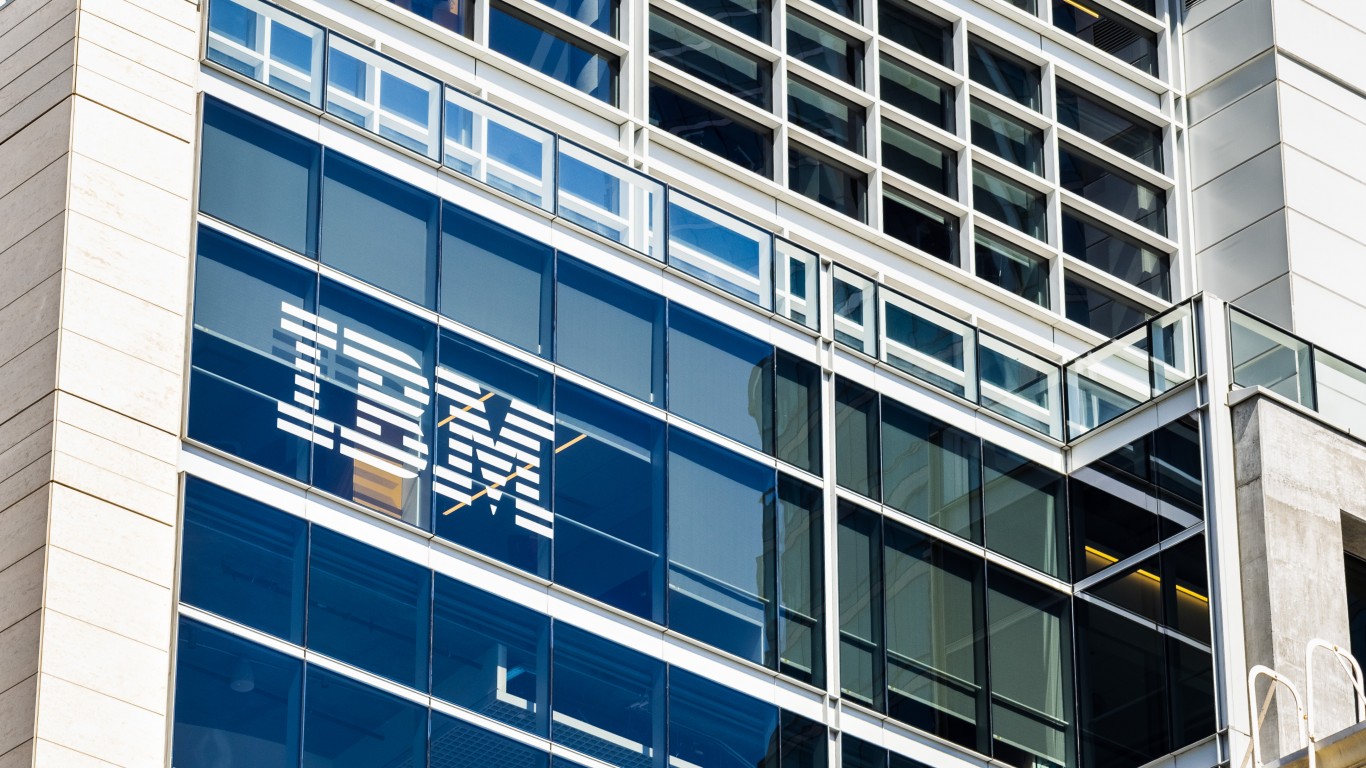
A key component of income investing is a portfolio that includes safe dividends, those that are unlikely to shrink or disappear. Recognizing when a dividend is stable and safe can be a challenge. Yet, certain metrics can offer clear signs for the investor looking to establish or shore up such a portfolio. What do these metrics tell us about the quarterly dividend at International Business Machines Corp. (NYSE: IBM)?
IBM’s most recent payout was $1.66 a share, and the yield is now about 4.0%. The next ex-dividend date is expected in February. The current yield is more than that of dividends at competitors Hewlett Packard Enterprise Co. (NYSE: HPE), Microsoft Corp. (NASDAQ: MSFT), Oracle Corp. (NYSE: ORCL) and SAP S.E. (NYSE: SAP). It is also greater than the industry average of around 2.4%.
Dividend Aristocrat?

Other Valuation Metrics

The dividend payout ratio indicates how much of a company’s earnings are paid out as a dividend. It is a sign of how safe a company’s dividend is and how much room it has for future growth. The higher the ratio, the greater the risk. Income investors often look for a dividend payout ratio of less than 60%. Alas, IBM’s current dividend payout ratio is around 85%. That is higher than the 44% average over the past decade, as well as the software industry average of about 38%.
A look at free cash flow reveals whether the company has the funds required for its payout, as well as for share repurchases or even paying down debt or making acquisitions. IBM’s free cash flow was about $9.2 billion for 2022, the lowest annual figure since 2010. While it is on track to beat that total in 2023, the overall trend has been downward since 2010, when the free cash flow was about $16.1 billion. Income investors prefer growing free cash flows, but in that regard, IBM disappoints.
Return on invested capital is a measure of how well a company allocates its capital to profitable projects or investments. Again, the thing to look for is stability, specifically a double-digit ROIC over many years. IBM’s current ROIC is less than 10%. That has been the case for the past couple of years and the figure has trended lower since the 37% or so seen in 2013. The ROIC at all the competitors mentioned above, except HPE, is higher.
Operating margin is a measure of the percentage of revenue a company keeps as operating profit. Here too the preference is for a stable double-digit percentage increase. The current figure is more than 14%, but that is down from more than 20% in 2013. However, the trend has been upward since the summer of 2020.
A look at sales growth offers a clue to the volatility or cyclical nature of the business. Steady, moderate growth, say 3% to 7%, is ideal. Despite an uptick in the past year or so, IBM’s revenue has trended lower since 2011, when it was over $106.9 billion, to $60.5 billion in 2022. Meanwhile, Microsoft, Oracle and SAP have all seen sales growth over the past decade.
A company’s net debt-to-capital ratio also can signal whether a dividend may be at risk. Because too much debt can put dividends at risk in hard times, a lower ratio is considered better. A debt-to-capital ratio above 0.6 usually means that a business has significantly more debt than equity. IBM’s ratio is near 0.7 and has drifted higher since 2010.
Probably the most popular valuation metric is the price-to-earnings (PE) ratio. This indicates whether a stock is expensive or cheap at its current market price, compared to the broader market or to competitors. IBM has a current PE ratio of about 21.5. The ratio has trended upward since 2015, including a spike in 2022, but the forward PE is closer to 17. It also compares with a historical benchmark of 15, as well as the broader market’s current 24 or so. Of the competitors mentioned above, only HPE has a PE lower than IBM. (Why the six highest-yielding Warren Buffett stocks are perfect 2024 investments.)
And finally, the number of shares outstanding is worth a look. When companies buy back their shares, that number shrinks. But secondary offerings of stock increase that number. Investors tend to prefer a declining total, as that increases their stake over time. For IBM, the number of outstanding shares has increased from 823 million in 2019 to more than 924 million. But that is down from almost 1.3 billion in 2010. Late last year, the company approved $15 billion for share buybacks, on top of more than $5 billion set aside previously.
Summary

| Dividend Aristocrat | ✔ |
| Dividend payout ratio | 🗙 |
| Free cash flow | 🗙 |
| Return on invested capital | 🗙 |
| Operating margin | ✔ |
| Sales growth | 🗙 |
| Net debt to capital ratio | 🗙 |
| PE ratio | ✔ |
| Shares outstanding | 🗙 |
IBM’s status as a Dividend Aristocrat is an encouraging sign for income investors. But the dividend payout ratio is high, and the payout does not currently seem to be supported by sales growth or free cash flow. Still, IBM has struggled for more than a decade and yet continued to boost its dividend. Its cloud computing business is growing, and it has prospects in artificial intelligence and quantum computing. The question is, can IBM finally turn around before it is forced to trim its payout and lose its Dividend Aristocrat status?
Are You Ahead, or Behind on Retirement? (sponsor)
If you’re one of the over 4 Million Americans set to retire this year, you may want to pay attention.
Finding a financial advisor who puts your interest first can be the difference between a rich retirement and barely getting by, and today it’s easier than ever. SmartAsset’s free tool matches you with up to three fiduciary financial advisors that serve your area in minutes. Each advisor has been carefully vetted, and must act in your best interests. Start your search now.
Don’t waste another minute; get started right here and help your retirement dreams become a retirement reality.
Thank you for reading! Have some feedback for us?
Contact the 24/7 Wall St. editorial team.





